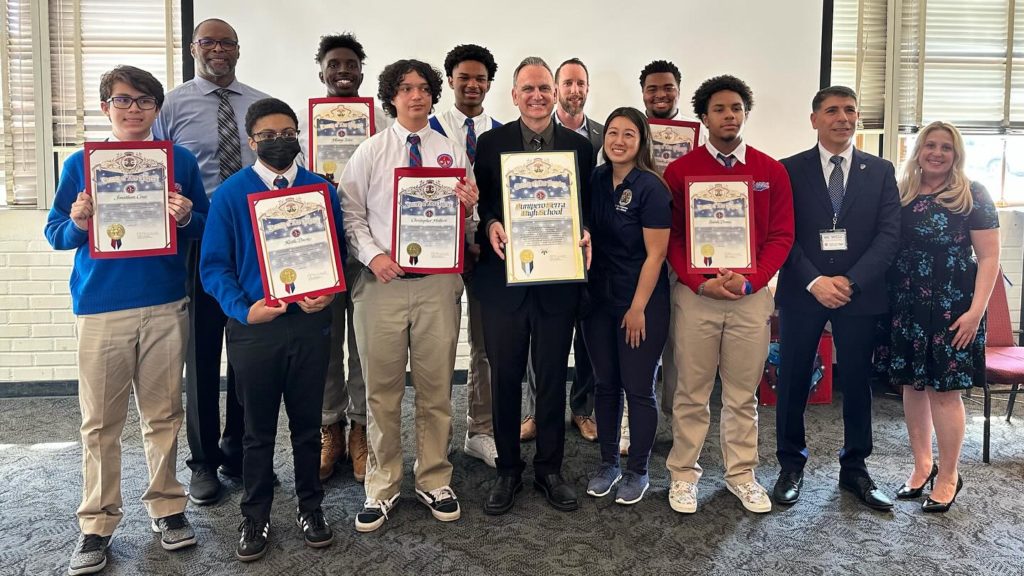Students at Junipero Serra High School in Gardena held a viewing party on March 21 to watch another of their experiments launched to the International Space Station.
On Aug. 1, 2023, Serra High students Isaiah Dunn, Christopher Holbert, Travis Leonard, Anderson Pecot, and Henry Toler saw their first experiment — attempting to get a seed to germinate and grow in space — launched on a SpaceX rocket as part of NASA’s International Space Station Program.
This year’s project involved the same five students plus newcomers Keith Davie, Jonathan Cruz, and Sasha Leverett and incorporated 3D printing in microgravity. The experiment will be studied at the International Space Station for a month before being returned to students for further analysis. Kenneth Irvine, science teacher and Science Department chair at Serra, worked closely with the students to get the project up and running.
After watching their experiment head to space in a successful launch, everyone was just relieved that everything went off without a hitch.
“It’s one thing to look at a feat of engineering and go, ‘Wow, that’s really cool,’ ” Irvine said. “It’s another thing when our students have been engineering something, they know how complicated it is.”
At the launch event, Serra High’s space team was honored by LA County Supervisor Holly J. Mitchell’s office, and the students will also be honored by the California State Assembly in Sacramento on April 22.
View this post on Instagram
Work for this year’s project began with brainstorming ideas in August, then having a prototype built in mid-December, to having a final unit ready in the first week of February.
Students finally came up with the idea to study the effect of 3D printing in microgravity after noticing that research into that specific subject had not been studied too heavily, Irvine said.
“What they’re really trying to study, in short, is how different the properties are of this resin when it’s been cured in microgravity, as opposed to the same conditions on Earth,” Irvine said. “When we get the object back, we’ll be testing the chemical and physical properties to see if one was cured differently than the other.”
He said the ability to use 3D printing in microgravity would be beneficial for agencies to produce things as needed in space rather than delivering them from Earth, noting that it costs up to $20,000 per pound to ship something into orbit.
Last year’s experiment of trying to grow a seed in space was created to try harvesting food, plants and medicine in space, and to design systems for removing carbon dioxide from a sealed environment while contributing oxygen back to the surroundings, which could be helpful in long-term space flight and living situations.
According to the school, Serra is one of only nine high schools in the United States to participate in the space program this year, and is one of the high schools competing in the prestigious XPrize competition.
Irvine said Serra High is partnering with several schools in both the U.S. and internationally to compete in the XPrize competition. The experiment involves carbon capture and storage, which removes carbon dioxide from the air, captures it, then stores it somewhere.
The team is still in the planning stages, but hopes to work on construction over the summer to have a functional prototype by February 2025.

